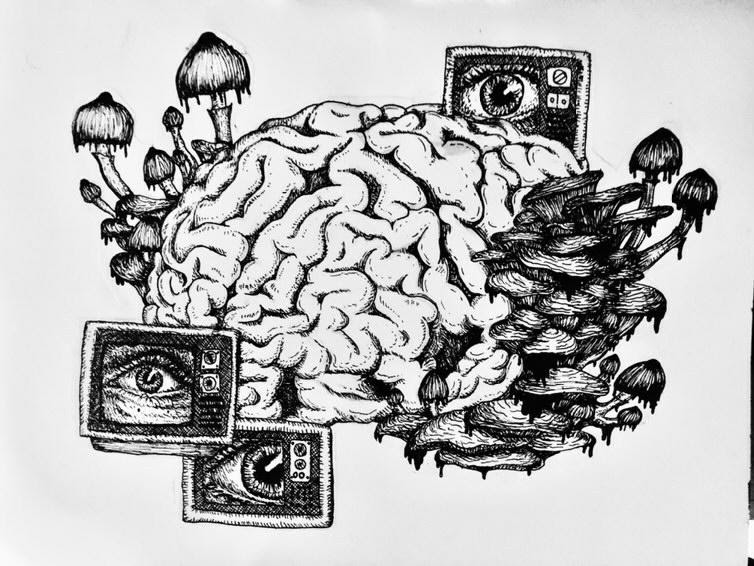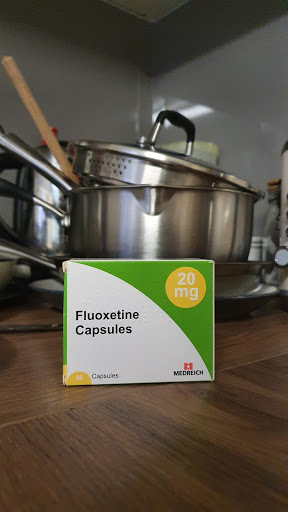Introduction:
Mental health has become the topic of conversation not only nationally, but worldwide during this pandemic due to many factors: people have been forced to stay inside to stay safe from the virus and have been isolated from many of their friends and family. The sudden and drastic changes in the day to day lives of neurodivergent individuals during this pandemic has had an obvious and tangible negative effect on their lives; this is a topic that I believe must be taken seriously, and it is one that I feel is being neglected and left behind by universities, neurotypical people and the government as a whole. The fact that people within the UK have been in some state of quarantine or lockdown for almost a year has meant that people’s routines have been flipped on their heads and that they have had to adjust to a wholly new way of learning that may not fit with how their mind works. I can attest to this myself, as the work and studying from home does not meld well with Attention Deficit Hyperactivity Disorder (ADHD) and depression, both of which have been consistent struggles during the lockdowns of 2020 and 2021.
Surrealism Art:

Credit: @the_elijah_files on Instagram
Elijah Ashton’s piece of surrealist art represents his mental state during the second long-term lockdown in the UK. This artwork made with inks and a quill was described by the artist as “a visual description of how social media has superseded physical interpersonal relationships and social interaction within the age of Coronavirus and how it has affected my own mental state” in an interview with me. This feeling of loneliness and isolation from friends and family despite the use of social media and how this leads to relationships and friendships feeling less real or meaningful due to them being experienced only through the lens of a screen. There is a contrast between the medium of the piece and the piece itself, as the use of a quill and ink harkens back to a more traditional method of artwork and brings focus to the beauty of that which is physical and personal, whereas the artwork itself shows how the online space and social media can be viewed as invasive, like the fungi that have taken over the brain in this artwork.
Medication:

credits: own photo
This photo is a representation of how the pandemic has affected my own mental health and the consequences of that mental health deterioration. I have been on and off of antidepressants for almost four years, but this past year and a half has been one of the hardest periods of that. We have seen a large increase in the prescription of antidepressants during the pandemic, with the Pharmaceutical journal finding that “23% more patients received an antidepressant item in the third quarter of 2020–2021 compared to the same quarter in 2015–2016”. This can even be seen as a conservative estimate of the number of people who may actually need these prescriptions as the lockdowns and coronavirus as a whole has slowed down their potential prescription.
Social Media:

Credit: Forbes
Due to the coronavirus pandemic, there has been an influx of people who have been struggling mentally. Many of these people have not been able to get the support that they need for their mental health issues or concerns due to the resources of the NHS being thinly spread and mainly focussing on stopping the spread of and treating those who have been infected with COVID-19. Due to this many people turn to the internet for an outlet: a study/survey put out by Global Web Index showed that escapism is one of the main reasons for social media usage, but also that 42% of people surveyed said that there was less pressure to represent themselves unrealistically on social media during the pandemic, which may lead to more awareness about and understanding of certain mental health conditions within the general public.
Anxiety and Depression:

Credit: Kaiser Family Foundation
This chart is from the Kaiser Family Foundation, which provides statistical information on medical and health policy and it shows the stark difference and upward trend of adults who report symptoms that would be categorised as part of an anxiety disorder or as part of a depressive disorder. We can see a large increase in these reports of symptoms of depression and anxiety within the pandemic, due to many of the factors that have been previously discussed in this exhibition. We can see an increase of 30.1% in symptoms of anxiety and depression within adults.
Executive Dysfunction:

The repetition of each day during the COVID-19 pandemic makes it hard for many people to find the motivation to do basic tasks, like doing the washing up, managing time and deadlines and other things; this is called Executive dysfunction and it is something that many people have issues with, and that has only gotten worse during COVID. With rates of depression and anxiety on the rise (as has been shown earlier within this exhibition), we see a rise in people with executive dysfunction issues; this can lead to people feeling overwhelmed with deadlines, feeling like they cannot get out of bed, and thus doing worse in school, university or in the workforce. There have also been findings stating that “in a significant number of cases COVID-19 infection may be associated with an executive dysfunction syndrome”; because of this, we must look more into ways to help people who struggle with executive dysfunction, rather than simply calling them lazy or disorganised.
Interactive Activity:
Describe your feelings and how your mental health has been during COVID on this interactive word cloud and see what others have been feeling.
This word cloud is live, with new words showing up on the screen as soon as they are added by a user, and words that are submitted more frequently show up as larger on the word cloud. This can show how others are feeling within this pandemic, as well as how frequent these feelings are among those viewing this exhibition.
Bibliography:
https://pharmaceutical-journal.com/article/news/antidepressant-prescribing-up-6-since-2019
https://www.kff.org/coronavirus-covid-19/issue-brief/the-implications-of-covid-19-for-mental-health-and-substance-use/
https://blog.globalwebindex.com/chart-of-the-week/social-media-amid-the-outbreak/
https://www.ncbi.nlm.nih.gov/pmc/articles/PMC7373676/
